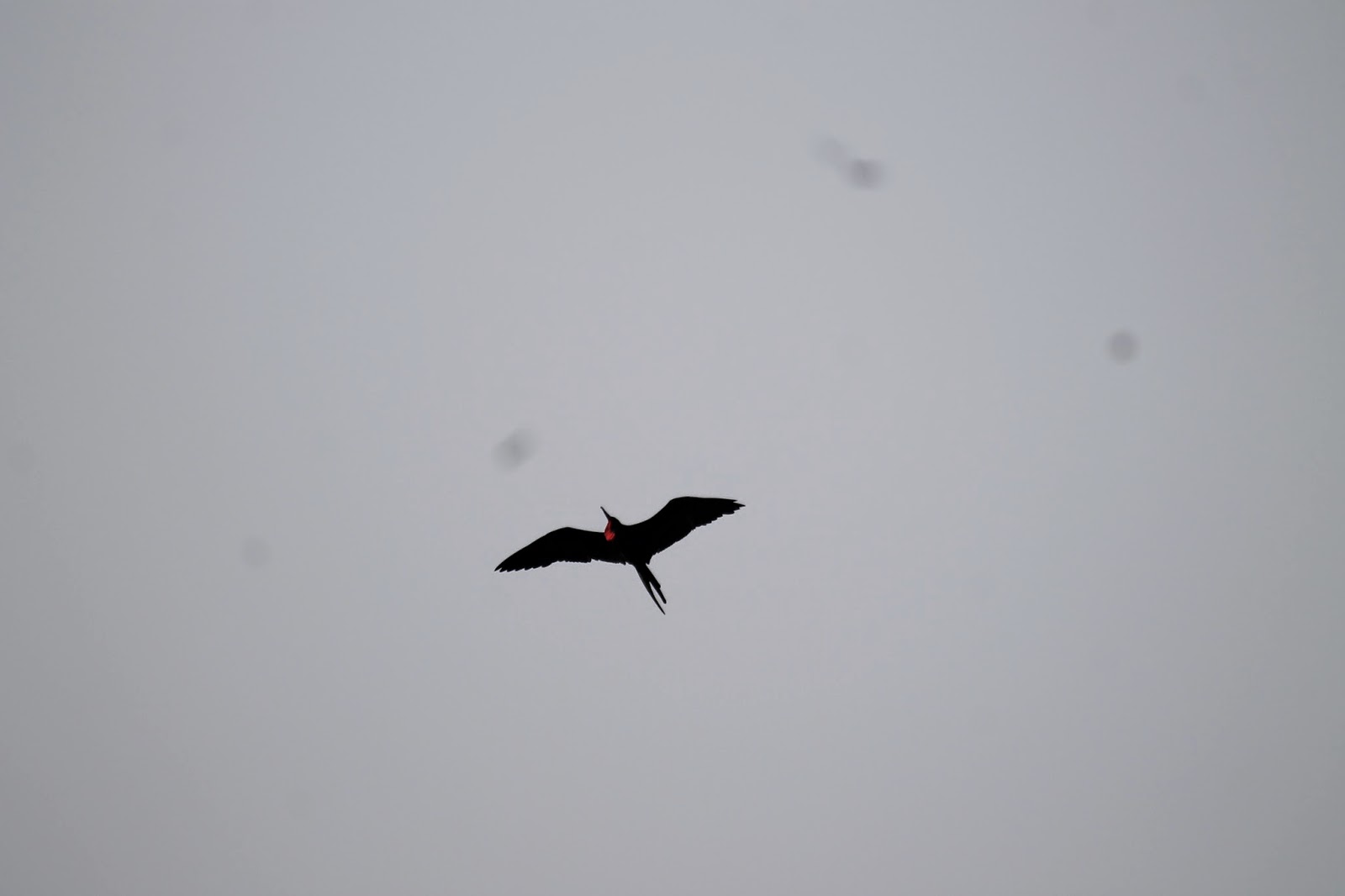I have not being birding in a couple of weeks, mostly because
the areas which would normally have been teaming with migrating shorebirds, at
this time of the year, are now dry. The reason? - An ongoing dry spell which
continued into the first two months of the rainy season (June and July). The beginning of August saw the first major rain
storm of the season but it had little effect on the very dry ponds and “wet areas”.
So I had to take my birding to places which still had water, even if just a
little.
Redland’s Irrigation Pond
My first stop was Redland’s Irrigation Pond in St. George.
This pond had suffered from the drought and is now slowly regaining water
but for now it is far away from its optimum water level. The water levels were so low that a Little
Egret could stand in the deepest area, so it was not surprising to see wading
birds in the now shallow pond. There
were nine Snowy and one little Egret with it long white head plumes. I spotted my first Solitary Sandpiper for the
migration season. Other birds at the
pond were the ever present Common Gallinules, a Spotted and a Greater Yellowleg
Sandpipers also a few Least Sandpipers. I
spent 15 minutes and then moved on.
Codrington
College
 |
| Green Heron @ Codrington College |
Codrington’s College was more of a fun stop than a birding
stop but while there, I decided to make a checklist. Mostly common birds were seen on the property
of this 18th Century Seminary but it remains the best place to
observe Green Herons. The first Eurasian
Collard Dove was observed here about a year or two ago but now, you can see a
number of pairs there. I spent about one
hour at Codrington’s College and moved on to my next stop.
Conset Bay
 |
| Shorebirds @ Conset Bay |
Conset Bay is a fishing port found on the East Coast of the
island.
I drove into the car park at
about 5pm. The first thing I noticed was that the beach, like so many on the East
Coast of the island, was being affected by the Sargassum Seaweed (
what is Sargassum Seaweed?).
Shorebirds though, were enjoying the seaweed,
and a flock of Least Sandpipers, Spotted Sandpipers and a Semipalmated Plover
were all busy feeding among the seaweed.
Other birds observed were three Caribbean
Martins and a couple of Carib Grackles.
On
to my next stop Bayfield Pond, but wait, Black Swifts!
Black Swifts
 |
| Black Swift @ Three Houses |
The road to Bayfield goes through the public park at Three
Houses St. Philip. Just as I exited the
road through the park I noticed the familiar boomerang shape of the Black Swift
flying to my right over a Banana Field. I stopped and exited the car and was able to
see a flock of more than ten Black Swifts. I tried to photograph as many as possibly with
some passing as close as 30 feet over head. In among the Swifts were Caribbean Martins
making for a perfect comparison between these two birds possible. Sadly I was unable to obtain a photographic
comparison. After about 10 minutes there,
I moved on to Bayfield Pond.
Bayfield Pond
For the first time, the Bayfield Pond is showing effects
from the low rain fall. Water levels are
falling. Snowy Egrets and Common Gallinules were busy feeding. Four Least Sandpipers were also on the banks of
the Pond. I rescued one of the Least
Sandpipers after it became stuck in the mud around the pond. It was startled by
a failed attempt of an Indian Mongoose to prey on it. It jumped into the pond and was unable to get
back out. I am not sure why it did not
fly; my guess was that its wings were too wet for flight. After trying to reach the bank, it became
stuck in the watery, muddy quick sand (mud). I took a long poll and help it to the bank. It was all covered with mud so I washed it off
and released it onto the banks of the pond. It was still unable to fly, so I transported
it to a beach not too far from the pond so that it would be less vulnerable to
attack. On its release, it was still unable
to fly but was now flapping its wings while heading for cover among the
Sargassum Seaweed on the beach. I hope
it survives.
 |
| Least Stuck in mud @ Bayfield |
 |
Least Sandpiper @ Bayfield
|
In two and a half hours I visited four locations and
recorded twenty-two bird species.
Barbados Bullfinch
|
Loxigilla barbadensis
|
Black-faced Grassquit
|
Tiaris bicolor
|
Black Swift
|
Cypseloides niger
|
Black-whiskered Vireo
|
Vireo altiloquus
|
Carib Grackle
|
Quiscalus lugubris
|
Caribbean Martin
|
Progne
dominicensis
|
Common Gallinule
|
Gallinula galeata
|
Common Ground-Dove
|
Columbina passerine
|
Eurasian Collared-Dove
|
Streptopelia
decaocto
|
Grey Kingbird
|
Tyrannus
dominicensis
|
Greater Yellowlegs
|
Tringa melanoleuca
|
Green Heron
|
Butorides virescens
|
Least Sandpiper
|
Calidris minutilla
|
Lesser Yellowleg
|
Tringa
flavipes
|
Little Egret
|
Egretta garzetta
|
Scaly-naped Pigeon
|
Patagioenas squamosa
|
Snowy Egret
|
Egretta thula
|
Solitary Sandpiper
|
Tringa solitaria
|
Spotted Sandpiper
|
Actitis macularius
|
Zenaida Dove
|
Zenaida aurita
|






































